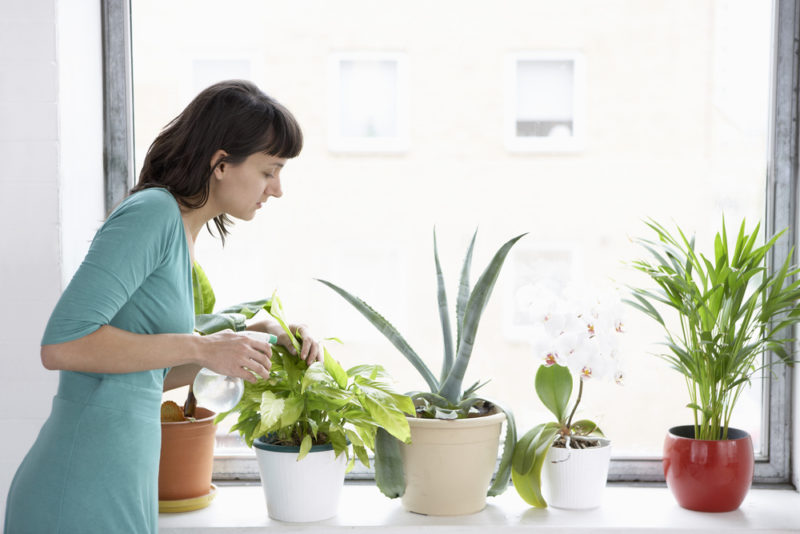Low humidity is an uncomfortable problem that’s not uncommon during Columbia, Maryland, winters. When humidity levels are low, allergens like dust, mold, and mildew dry up and can easily become airborne. Dry nasal passages make the problem worse by allowing easier access to the lungs. Increasing your home’s humidity this winter can help you stay comfortable and keep those allergens and irritants under control.
Get a Little Greener
Keeping plants in the home is an easy, natural way to increase your home’s humidity. Having plants can improve your home’s indoor air quality in other ways as well. Many houseplants naturally remove volatile organic compounds (VOCs) from the air. Some top picks for better indoor air quality include spider plants, aloe vera, and Gerbera daisies.
Air-Dry Laundry
Save energy and increase humidity in one fell swoop by hanging your laundry in the house to dry instead of using the dryer. The damp clothing will disperse moisture into the surrounding air as it dries. If you have a particularly dry room in the house, see if you can find a spot for a drying rack there. Placing a fan behind the drying clothes can also help spread the moisture.
Install a Whole-House Humidifier
If you struggle with low humidity often, the most efficient solution is to install a whole-house humidifier. This installation becomes part of your HVAC system and provides moisture throughout the home. Unlike room-style humidifiers, which address only a small area at a time, a whole-house humidifier efficiently manages comfort levels throughout the home.
Spread Shower Humidity
You typically want to run a ventilation fan while you shower to cut down on humidity. However, if your home needs more humidity, set a fan to blow air out of the damp bathroom and into the rest of the house after your shower.
For more help managing your home’s indoor air quality, contact Griffith Energy Services at 888-474-3391. We’ll help you boost both comfort and humidity levels in your home.
Image provided by Shutterstock




